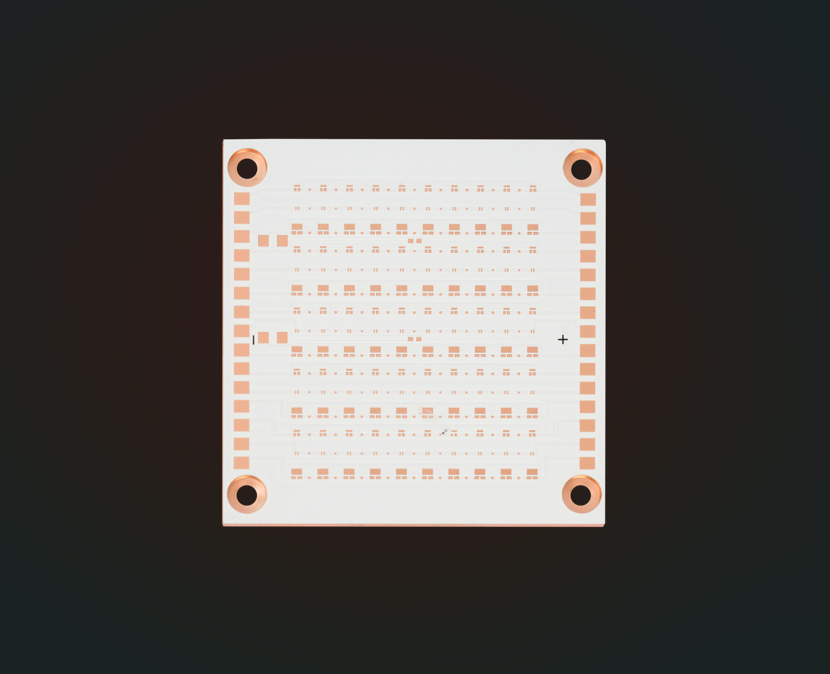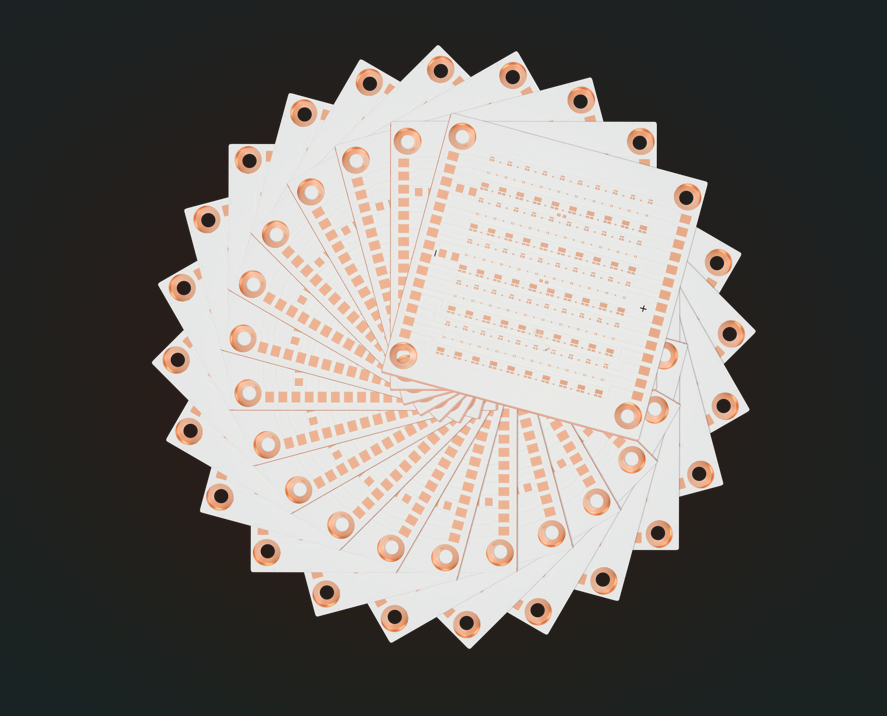Look for PCB Double Syed Syed Copper solution? Let’s explore the benefits, applications, design guidelines, manufacturing processes, differences between PCB Clad Copper One Side.
Are you worried about this problem?
- Loss of severe high frequency signals?
- Is the downtime a bad heat dissipation system?
- Is inadequate mechanical strength causing assembly failure?
The best technology can provide services and solutions:
- Thermal Simulation Pre-Verification Services: Free PCB Thermal Distribution Simulation Reports to optimize your thermal design first.
- Custom copper thickness solution: a combination of flexible copper thickness from 1oz to 10oz supported, saving 12% in material costs per project.
- Failure Analysis of the Fast Response Mechanism: Reports on production defects are issued within 24 hours, shortening your problem solving cycle.
Don’t hesitate to contact us if you have a request for PCB Clad Copper: [email protected].
Is that a two -sided copper PCB Clad?
A PCB Double Syed Syed Copper is a print circuit board with a conductive copper layer on the upper and lower surfaces of the insulation substrate (usually FR4 or similar material). The copper layer is engraved to form a circuit pattern, while layered through a hole (PTH) or VIAS electrically connects both sides. This design allows a complex circuit stomach in the compact space, making it ideal for applications that require moderate density interconnection, such as consumer electronics, industrial control, and power supply. Structure Balancing cost efficiency and functional flexibility compared to one -sided or multilayer board.
What are the benefits of PCB Clad copper two sides?
Higher cable density
- The two -sided copper PCB allows traces to be diverted on both sides of the board, saving more than 50% of space compared to one -sided board. They are very suitable for small and medium electronic devices with complex functions, such as smart goods that can be worn and industrial control modules.
Stronger signal integrity
- Planning a trail of two sides properly shortening the high frequency signal pathway, reducing the loss of transmission, and increasing communication stability (for example, in the 5G module and RF circuit).
Better cost effectiveness
- Compared to the multi -layer PCB, two -sided copper PCB offers 30% -50% lower production costs while meeting the performance requirements of most middle class products, making it the most cost -effective choice.
Flexible thermal design
- Using a metal substrate (such as aluminum), the two -sided structure makes it possible for the integration of circuit and efficient heat dissipation, making it suitable for applications such as LED lighting and power converter.
Extensive compatible process
- Supporting mainstream processes such as metalization through hole (PTH) and Surface Mount Technology (SMT), they facilitate integration with existing production paths and reduce modification costs.

What is the two -sided copper base PCB application?
- Consumer Electronics -Motherboard smart phone, laptop graphics cards, and tablet devices for concise cables, cable with high density.
- Industrial control – Modules, sensors, and PLC motor drivers who require thermal management and reliable signal integrity.
- Automotive electronics – Engine Control Unit (ECU), Infotainment System, and Battery Management for Durability in Hard Environment.
- Medical devices – Portable monitors, diagnostic devices, and imaging systems that demand precision and miniatures.
- Communication equipment – Router, switch, and 5G base station module for efficient stomach signals and impedance control.
The difference between a single copper and two -sided PCB clad
| Comparison Point ‘ | â € œICopper one side dressed in PCB ‘ | â € œThe double side of copper dressed in PCB ‘ |
| â € œThe layer “ | 1 layer (only the bottom side) | 2 layers (top & bottom) |
| â € œConduction Method ” | No VIAS (required jumper) | VIAS through a hole for interconnection |
| â € œDrouting density ‘ | ‰ ¤40% utilization (no cross route) | ‰ ¥ 70% utilization (cross -activated) |
| â € œMin. Trail/space | 0.3mm/0.3mm | 0.15mm/0.15mm |
| â € œThe sight of performance ‘ | Single Side Discussion (Rî¸ higher) | Dual-path cooling (30% lower rî¸) |
| “Manufacturing Costs” | 30-50% lower (simpler process) | 50-80% higher (drilling/coating added) |
| â € œPer Typical Application ” | LED/SMPS Strip | IoT/Motor Drive Device |
| “Signal Integrity” | Suitable for <10MHz | Support â ‰ ¤100mhz design |
| â € œThe strength of the mode € œ | Peel-off copper | Through cracks/delamination |
| “Keclamation” | Higher (thinner construction) | Lower (additional structural layer) |
PCB design guidelines for double sided sided copper
Below is PCB Clad Double Side Design Guidelines:
1. Layout strategy
- Analog/digital/group power components separately.
- Place critical signals (for example, hours, RF) far from the edge of the board.
- Avoid accumulating components on the opposite side if possible.
2. Basic stomach
- Use the top layer for the primary signal; Bottom for land/power aircraft.
- Traces of width  ‰ ¥ 8 million (0.2mm) for current 1A.
- Maintain a distance of 6 miles between traces to reduce crosstalk.
3. Through the best practice
- Use VIAS through a hole for a layer-to-layer connection.
- Drill size: 0.3â € “0.5mm (12 â €” 20 miles) with â ‰ ¥ 0.2mm Annular Ring.
- Limit through density to <50 per square inch to avoid drilling problems.
4. Thermal considerations
- Add 3 ‘5 thermal Vias under high power components (for example, mosfet).
- Use copper pour (‰ ¥ 70% coverage) in both layers for heat dissipation.
- Connect the surface installation bearings to the ground field through the thermal relief.
5. Power & Land Design
- Avoid splitting a ground except necessary.
- Place a 0.1 μF decoupling capacitor near the IC power pin.
- Connect the reasons for analog/digital at one point (entity of stars).
6. Production Tips
- Add via -based test bearings for critical nets.
- Open a solder mask ‰ ¥ 0.3mm around the bearing for wave soldering.
- Check DFM: Silkscreen text â ‰ ¥ 1mm, avoid acute track angles.
7. Surface final selection
- Choose hasl for assembly through a cost -effective hole.
- Use Enig for SMT Fine-Pitch (for example, 0.4mm BGA).
8. File preparation
- Gerber layer export: top/bottom copper, solder mask, silkscreen.
- Separate NPTH/PTH drill files.
- Include an assembly image with a sign of polarity/orientation.

How do I make a PCB board in two sides of copper?
1. Preparation of raw materials
- Substrate Options: Use FR-4 (epoxy strengthened by fiberglass) or other fire resistant material as a basic substrate.
- Copper foil: Cut the copper foil to match the PCB dimension, ensuring uniform thickness (usually 18â € “70 â µm).
2. Cleaning copper foil
- Degrease Copper Foil uses alkaline solutions to remove oil and contaminants.
- Apply micro-eths (for example, sodium persulfate) for rough surface for better adhesion.
3. Laminated process
- Cover the substrate between two copper foil.
- Use a vacuum suppressor to apply heat (170 € “200 ° C) and pressure (20â €” 40 kg/cm ²) for 60â € “120 minutes, binding the layer.
4. Drilling holes
- Use a CNC drill to make it through a hole and a component installation hole.
- Holes deburr to get rid of debris and make sure the walls are smooth.
5. Electric copper coating (metalization through a hole)
- Soak the board in a catalyst solution (for example, paladium chloride) to activate non-conductive holes.
- Store thin layer of copper (0.2â € “0.5 μm) through chemical coating to connect both sides.
6. Application of Dry Film Photoresist
- Dry film laminate Phoresist to both sides of the board.
- The film exposure to UV rays through the circuit pattern mask, hardening open areas.
7. Electroplating (Pattern Plating)
- Additional copper plates (20â € “â µm) and lead layers (8â €” 12 â µm) above open traces.
- Tin acts as an ETSA who holds it during the next step.
8. ETSA Process
- Remove the not exposed photoresis using sodium hydroxide.
- Unwanted copper etc. with ammonium persulfate or cupric chloride, leaving a layered trail.
9. Solder Mask Application
- Cover both sides with epoxy -based mask solder ink.
- Exposure and develop to maintain mask only in non-conductive areas.
10. Surface is complete
- Apply the Leveling of Hot Air Solder (HASL) for tin coating or OSP (Organic Solder Preservatives) for Lead -Free options.
11. Electric testing
- Use a flying probe examiner or bed equipment to verify the continuity of the circuit and isolation.
12. Routing/V-Score
- Cut the individual PCB from the panel using a CNC router or V-Groove score for easy separation.
13. Final Inspection & Packaging
- Perform visual examination and verification of dimensions.
- Vacuum seal boards with desiccant packages to prevent moisture damage.
Why Choose the Best Technology as a PCB Manufacturer Copied?
- Superior thermal performance: Copper Core provides 398 W/Mâ · K conductivity, reducing the temperature of the device by 30% for the lifetime of extended products.
- Fast Prototype Service: 24 hour turnover for samples with the same day technical review.
- Competitive Prices: Transparent prices without hidden costs and cost -effective for high volume production.
- Strict quality control: 100% Automated Optical Inspection (AOI) and X-ray testing for defective PCB.
- Fast production waiting time: The standard waiting time of 15 days with accelerated options for urgent orders.
- Dedication Technique Support: 24/7 Technical Team to optimize design and problem solving.
- DFM Free: Optimize your design for production, reduce production errors by up to 40%.

Our copper Clad Clad PCB capabilities
| Basic material: | Copper |
| Thermal conductivity (dielectric layer): | 0.8, 1.0, 1.5, 2.0, 3.0 W/MK |
| The thickness of the board: | 0.5mm ~ 3.0mm (0.02 ″ ~ 0.12 ″) |
| Copper thickness: | 0.5 oz, 1.0 ounces, 2.0 oz, 3.0 oz, up to 10 oz |
| Outline: | Routing, punching, V-Cut |
| Solddermask: | White/black/blue/green/red/red oil |
| Legend/silkscreen color: | Black and white |
| Surface finishing: | Gold Immersion, Hasl, OSP |
| Max panel size: | 600*500mm (23.62 ″*19.68 ″) |
| Is packing: | Vacuum/plastic bag |
| Sample l/t: | 4 ~ 6 days |
| MP L/T: | 5 ~ 7 days |
Instant quote
Give this detail for accurate offers for your PCB Core Metal project:
- Basic material: Aluminum or copper nucleus (Determine thickness, for example, 1.5mm).
- Copper thickness: 1-4 ounces for the outer layer.
- Dimensions of Board: Length à – width (including tolerance).
- Number of layers: One or two sides.
- Surface finishing: Hasl, England, or OSP.
- Thermal Requirements: Max operating temperature, heat dissipation target.
- Special Process: Through coating, edge coating, or counterbores.
- Quantity: Prototype (1-10 pc) or bulk order (> 100 pc).
- Waiting time: Standard (7-10 days) or urgent (24-hour prototype).
Welcome to contact the best technology at [email protected] If you have a question for a metal core PCB.
Tag: PCB Plad copper double side, double sided sidened copper clad pcb board
This entry was posted on Wednesday, July 30, 2025 at 11:06 am and was submitted under the best PCB, BestTPCB, MCPCB, PCB Core Metal. You can follow any response to this entry through RSS 2.0 bait. You can leave a response, or trackback from your own site.
Game Center
Game News
Review Film
Berita Olahraga
Lowongan Kerja
Berita Terkini
Berita Terbaru
Berita Teknologi
Seputar Teknologi
Berita Politik
Resep Masakan
Pendidikan
Berita Terkini
Berita Terkini
Berita Terkini
review anime